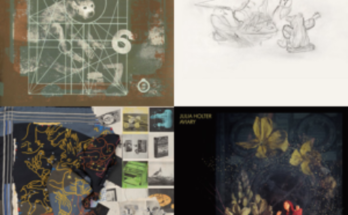At the corner of First Street and St. Mary’s Road, there is a sheep farm with one llama. Every day on their way to work at the National Center for Supercomputing Applications (NCSA), a group of University of Illinois alumni would pass this farm.
“The best way to keep sheep safe from coyotes is a llama,” explained Amit Sudharshan, co-founder of Onellama.com. “After seeing that every day, we had no choice but to incorporate it in the name.” The creators of Onellama.com hope that the Web site will shepherd its users in by catering to their individuality amidst an ever-expanding electronic music market.
Created in part by the NCSA, the International Music Information Retrieval Systems Laboratory, Illinois Ventures and with the help of funding through the Illinois Innovation Accelerator Fund, Onellama.com offers a variety of tools to help users discover new music. The Champaign-based company is similar to sites like Pandora.com and amiestreet.com in that it attempts to categorize music to assist users in their discovery process. However, One Llama is able to distinguish itself due to its methods of classification.
The site uses two separate techniques to sort its 500,000 songs. One technique, called the collaborative filtering model, helps to determine social relationships between songs. Using a process called playlist mining, the site scans social networks and cultural references to determine how others have categorized the music. The second technique, called the audio similarity model, uses advanced algorithms for intricate music analysis. This is where One Llama makes their mark.
The site’s technology is essentially able to listen to music, emulating how the human ear would hear it. These algorithms analyze sonic characteristics like key, tempo, melody and timbre to determine the unique composition of each song. However, the One Llama technology goes far beyond these basic characterizations, examining close to 10,000 features associated with each fifteen-second window of a song. Using these two sorting techniques, the site then attempts to determine how it can best integrate the two models to produce optimal results for the user.
“The power of both is really incredible,” says Sudharshan, “because you can really customize how you want to discover music”.
The Web site has big plans for the future. Their methods of classification, along with their unique technology, provide the perfect vehicle for smaller, obscure bands to gain a wider audience. Soon, the site may offer to sell music for smaller groups, playing the role of distributor and possibly eliminating record companies from the entire process. In addition, the site has been linking up with the giants of the electronic music business, penning deals with iTunes and Amazon.com for the actual sales of songs and YouTube.com to integrate streaming music videos for over 200,000 songs.
The creators are confident in their work, noting that where there is a good product, a community will form. With both the number of members and songs growing daily, Sudharshan states the ultimate goal: “Onellama.com aims to make all of the world’s music searchable and discoverable by any user, anywhere.” With One Llama to direct the sheep, this just may be possible.
Champaign's Alternative



